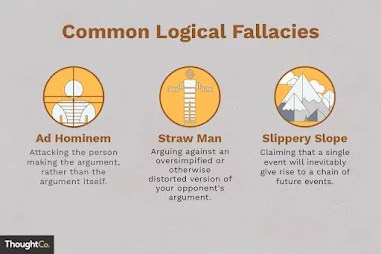While the Leave It fallacy can be seen as a type of Ad Hominem because it involves rejecting a person’s claim based on an irrelevant attack on the person, it has two distinguishing features.
First, the person is attacked because they are being critical of something. This attack often involves asserting the critic is motivated by a secret association or agreement with a disliked group. Second, rather than refuting the criticism, the attacker only tells the target to “leave.” There is, however, the implied conclusion that the person told to leave is thus wrong in their criticism. The fallacy has the following general form:
Premise 1. Person A makes critical claim X about Y.
Premise 2. Person B attacks A (usually for an alleged association/agreement with a disliked group G) and says that if A does not like X about Y, then they should leave Y (usually for G).
Conclusion: Therefore, X is false.
This argument is a fallacy because attacking a person and telling them to leave does not prove their criticism is false. The fallacy draws much of its psychological power from the cognitive bias of groupthink and ingroup bias. Groupthink is the tendency to try to minimize conflict and form a consensus by suppressing dissent and avoiding outside influences. Ingroup bias is the tendency to see one’s own group as superior and outsiders as inferior. Someone who is critical of a group can easily be presented as a threat and people in that group can be motivated to reject that criticism out of anger and dislike. These biases do not, of course, have any logical weight.
Defense: The defense against this fallacy is to try to reason through any negative feelings one might have and ask if any relevant refutation of the criticism has been offered. If it has not, then the “argument” gives no reason to reject that criticism. This does not mean that the criticism is therefore true—it just means the fallacy does not provide any reason to reject it.
Example #1
“These woke liberals claim that America still has systematic racism. But their brains have been corrupted by the foreign philosophies of the Frankfurt School and Cultural Marxism. If they hate America so much, they should just leave!”
Example #2
“These conservatives claim that America has Marxist elements. But their brains have been corrupted by the foreign philosophies of fascism and Nazism. If they hate America so much, they should just leave!”

No comments:
Post a Comment